Neighbour complaint letter template
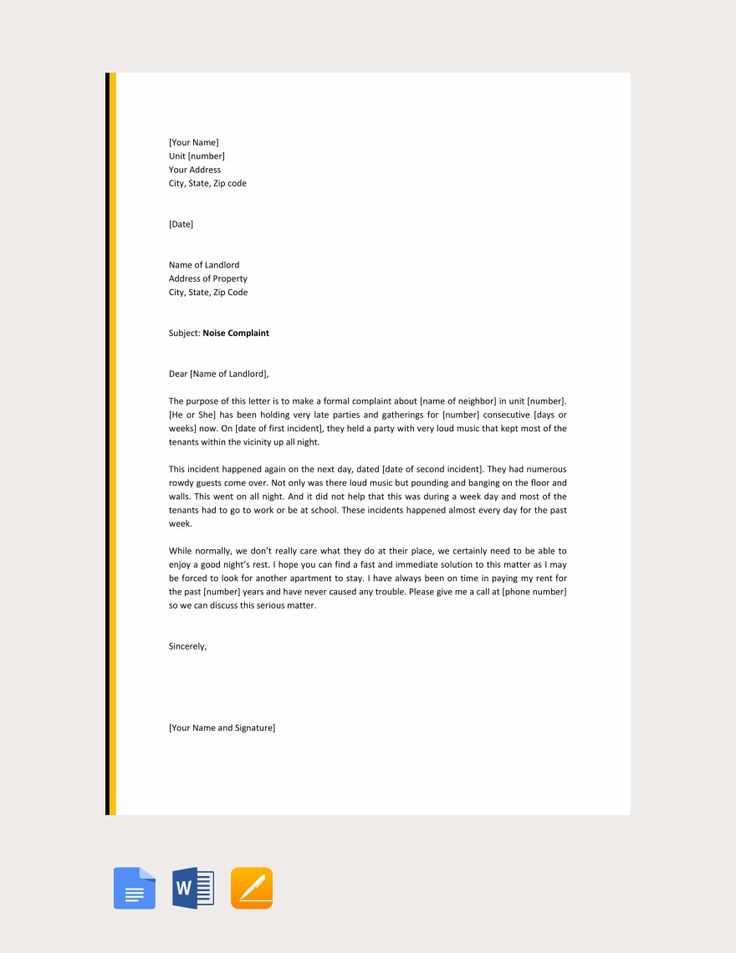
If you need to address an issue with a neighbour, a well-written complaint letter can help resolve the situation professionally and respectfully. Start by clearly stating the issue at hand, ensuring the tone remains courteous throughout. Avoid making assumptions or using aggressive language, as this may escalate tensions rather than encourage cooperation.
Focus on providing specific details, such as dates, times, and descriptions of the behavior or situation causing disruption. The more precise you are, the easier it will be for your neighbour to understand the problem. Offer potential solutions if appropriate, as this shows your willingness to resolve the matter amicably.
Maintain a friendly yet firm tone in your letter. Express your expectation for a resolution while leaving room for open dialogue. A cooperative approach is more likely to lead to a positive outcome, ensuring both parties can continue to coexist peacefully.
Neighbour Complaint Letter Template
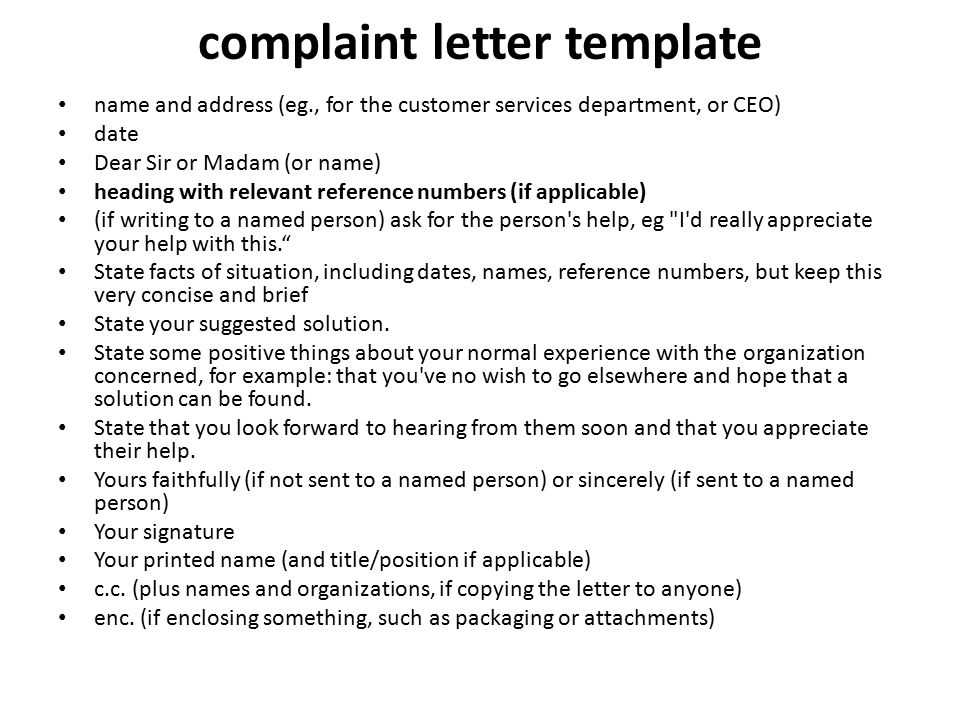
If you’re experiencing issues with your neighbour and need to address the situation formally, a well-written letter can be an effective first step. Below is a template to guide you in drafting a clear and respectful complaint letter.
Template
Dear [Neighbour’s Name],
I hope this letter finds you well. I am writing to bring to your attention an issue that has been causing some concern. [Describe the issue briefly, such as loud noise, property damage, or disruption.] This has been occurring [mention specific days/times or duration].
I kindly request that you [state the action you would like your neighbour to take, e.g., reduce noise levels, repair damage, stop a specific behavior]. I believe this will help to resolve the situation in a manner that is fair to both parties.
Please let me know how you plan to address this issue. I appreciate your attention to this matter and hope we can find a solution that works for everyone involved.
Sincerely,
[Your Name]
[Your Address or Apartment Number]
Tips for Writing Your Letter
Keep your tone calm and polite throughout the letter. Be specific about the issue and how it affects you. Provide a reasonable request for resolution and express your willingness to discuss the matter if needed. This will encourage a positive response and increase the likelihood of resolving the situation amicably.
How to Address Noise Complaints in Your Letter
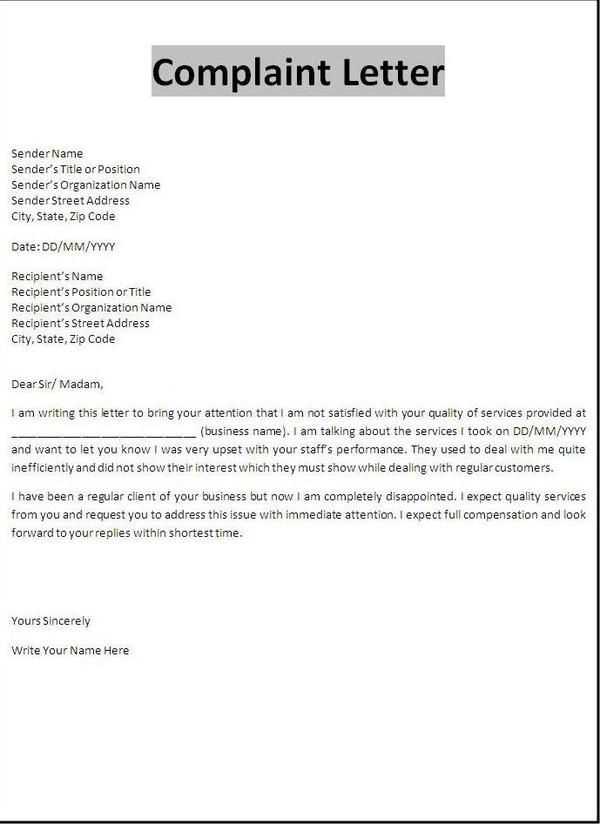
To address noise complaints effectively, be direct and specific. Start by acknowledging the issue. Mention the exact time or dates of the disturbances. This shows that you’re aware of the problem and sets a clear context for your response.
Provide Details of the Noise
Describe the nature of the noise as accurately as possible. Is it loud music, constant stomping, or perhaps a barking dog? Detailing the source of the noise helps your neighbor understand exactly what’s bothering you. It’s also helpful to mention how long the noise typically lasts and if it happens at specific times of the day or night.
Propose a Solution
Suggest reasonable steps to resolve the issue. Offer a polite request for quieter hours or ask if they can reduce the noise level during certain periods. If necessary, propose a compromise, such as setting designated hours for noisy activities. Showing that you’re open to finding a solution makes your request more reasonable and fosters cooperation.
Structuring the Complaint for Clarity and Impact
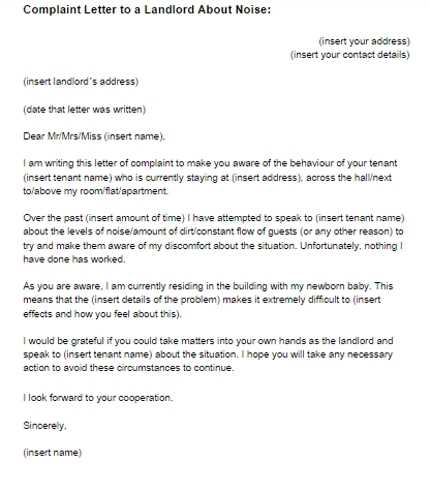
Begin by clearly stating the issue at the start of the letter. Provide specific details, such as dates, times, and locations, so your neighbor can easily understand the situation. This makes it easier for them to grasp the scope of the complaint and respond appropriately.
Next, describe the impact of the issue. Instead of focusing on emotions, focus on how the situation affects your daily life. Whether it disrupts your sleep, creates noise, or causes other disturbances, describe these effects objectively. This helps the reader see the problem from your perspective.
After detailing the problem and its impact, suggest a possible solution. Be clear about what actions you would like your neighbor to take. Offering a solution helps guide the conversation towards resolution and shows that you are seeking an amicable outcome.
Conclude with a polite but firm request for a response. Reinforce the importance of addressing the matter quickly, while maintaining a friendly tone. This ensures your neighbor understands the urgency without feeling overwhelmed.
What to Include in the Opening Paragraph
Begin by addressing the recipient of the letter clearly. State your name and provide your address to establish your identity as the sender. Directly mention the issue or complaint, explaining the specific problem you are facing. Include the location or situation where the issue has occurred, ensuring the recipient understands the context. Keep the tone polite and avoid accusatory language; aim for a neutral approach that invites cooperation.
| Element | Description |
|---|---|
| Your Name | Clearly identify yourself as the sender of the complaint. |
| Address | Provide your address for proper identification. |
| Complaint Issue | Describe the specific issue or problem you are experiencing. |
| Location/Details | Include relevant details to help the recipient understand the situation. |
How to Describe the Problem Without Being Overly Emotional
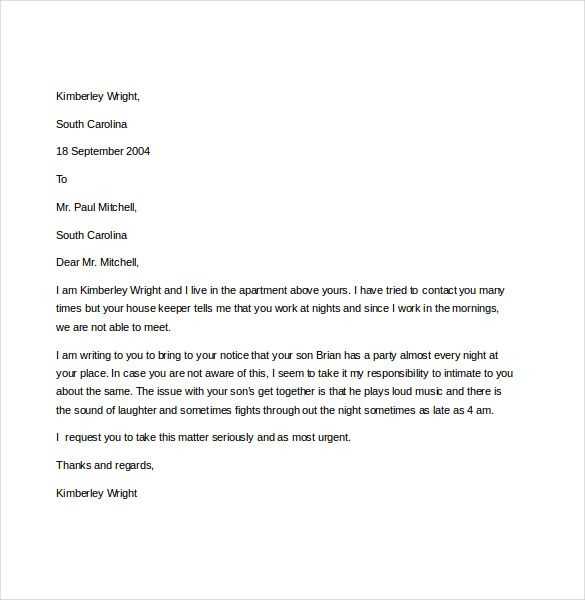
Stick to the facts. Describe the issue clearly and specifically without exaggerating your feelings. Focus on the impact the problem has, using straightforward language to explain the situation. For example, instead of saying, “I am constantly disturbed by the noise,” try “The noise from the construction site has been ongoing from 8 AM to 6 PM daily, causing difficulty concentrating and resting.” This approach keeps the tone neutral and ensures your complaint is based on verifiable facts.
Provide Concrete Examples
Including specific instances makes your complaint stronger. Mention dates, times, and specific occurrences. For instance, instead of saying, “Your dog always barks loudly,” you could write, “On January 15th, from 7 PM to 8 PM, your dog barked loudly for an extended period, which disturbed my peace and quiet.” By providing details, you remove any ambiguity and avoid emotional language.
Focus on Solutions
Always suggest a resolution. Rather than dwelling on the frustration the situation causes, offer a practical solution. For example, “If the noise could be reduced after 6 PM, it would help me significantly,” or “If you could keep your dog indoors during late hours, it would reduce the disturbance.” This shifts the tone from complaint to collaboration, fostering a more positive outcome.
Suggested Ways to Offer a Solution or Request Action
Propose a clear and actionable solution that directly addresses the concern. Be specific about what steps you want the neighbor to take. For example, you can suggest they limit noise after a certain time or arrange for a professional service to fix an issue. Providing a timeframe for when the action should be taken helps ensure progress.
If you are unable to resolve the situation on your own, offer a suggestion for involving a third party. This could include contacting a property manager or mediator to help find a mutually agreeable solution.
Ask for a response or follow-up from your neighbor. This shows that you are open to dialogue and willing to discuss possible adjustments. You can politely request a meeting or phone call to ensure understanding and agreement.
Always express a willingness to collaborate and work together for a positive outcome. This approach creates a sense of cooperation and shows that you are flexible while still addressing your concerns.
In some cases, proposing an alternative solution, such as adjusting schedules or seeking compromise, can help avoid further conflict and resolve the matter efficiently.
How to Follow Up After Sending the Letter
After sending a complaint letter to your neighbor, make sure to check in if you haven’t received a response within a week or two. This helps maintain clear communication and shows you are serious about resolving the issue.
Contact Methods
If your letter was sent by mail, consider following up with a phone call or email. A direct approach often works best. Be polite but clear about your concern and the need for a resolution.
What to Say
- Express your hope that the issue is being addressed.
- Ask if they need any more details or if there’s anything you can do to help resolve the situation.
- Politely remind them of the initial letter and ask for an update on the steps they’ve taken.
- Stay calm and constructive, focusing on finding a solution together.
Be open to discussing possible compromises or solutions. This shows your willingness to cooperate and can lead to a quicker resolution.